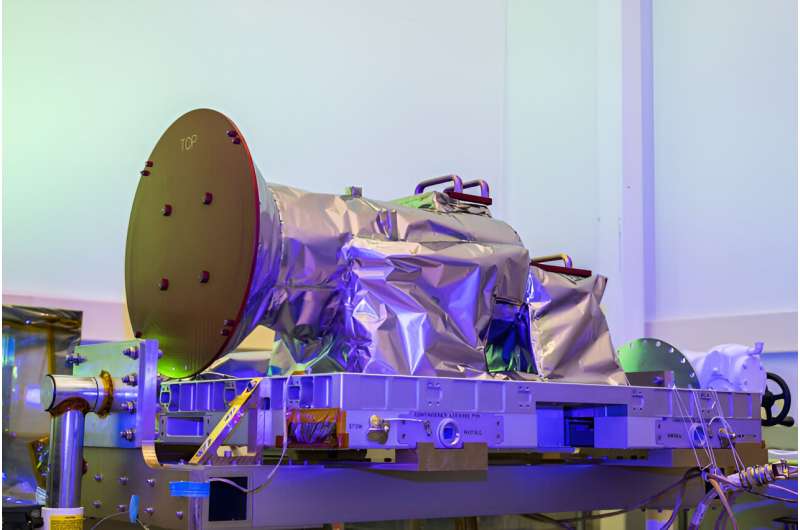This article has been reviewed according to Science X's editorial process and policies. Editors have highlighted the following attributes while ensuring the content's credibility:
fact-checked
trusted source
proofread
NASA's Atmospheric Waves Experiment completes space environment tests

NASA's Atmospheric Waves Experiment (AWE) has successfully completed critical space environment tests. Planned for launch to the International Space Station in November 2023, AWE will study atmospheric gravity waves in Earth's atmosphere to help us better understand the connections between terrestrial weather and space.
"AWE is a highly sensitive, precise science instrument designed to be fitted on the International Space Station and operate in the harsh space environment," said Burt Lamborn, AWE project manager at Utah State University's Space Dynamics Laboratory (SDL), which is building the instrument for NASA. "To ensure that AWE will survive launch turbulence and operate as designed once in space, SDL put the instrument through its paces on the ground."
AWE's environmental tests included:
- Electromagnetic interference/electromagnetic compatibility (EMI/EMC) testing to ensure AWE does not produce or emit electromagnetic signals that could interfere with other critical equipment on the International Space Station.
- Exposing AWE to a variety of high-level noise sources to ensure that any interference originating from the space station will not impair AWE's observations.
- Tests to verify ruggedness and reliability, electrostatic discharge, and voltage spikes.
- Vibration and strength validation testing using a shaker table that simulated the predicted conditions during launch.
- Thermal vacuum testing to demonstrate the performance and operation of the AWE instrument in a simulated flight environment.
- Instrument calibration in a vacuum chamber, which simulated on-orbit environmental conditions.
Satellite communications that enable banking, navigation, telephony, entertainment, and many more applications can be disrupted by impacts from atmospheric gravity waves and from adverse space weather.
Scientists hope to gain new knowledge from AWE that will help them more accurately forecast the impact on communications from atmospheric waves and space weather while allowing mission planners and satellite operators to plan contingencies.
Provided by NASA




















